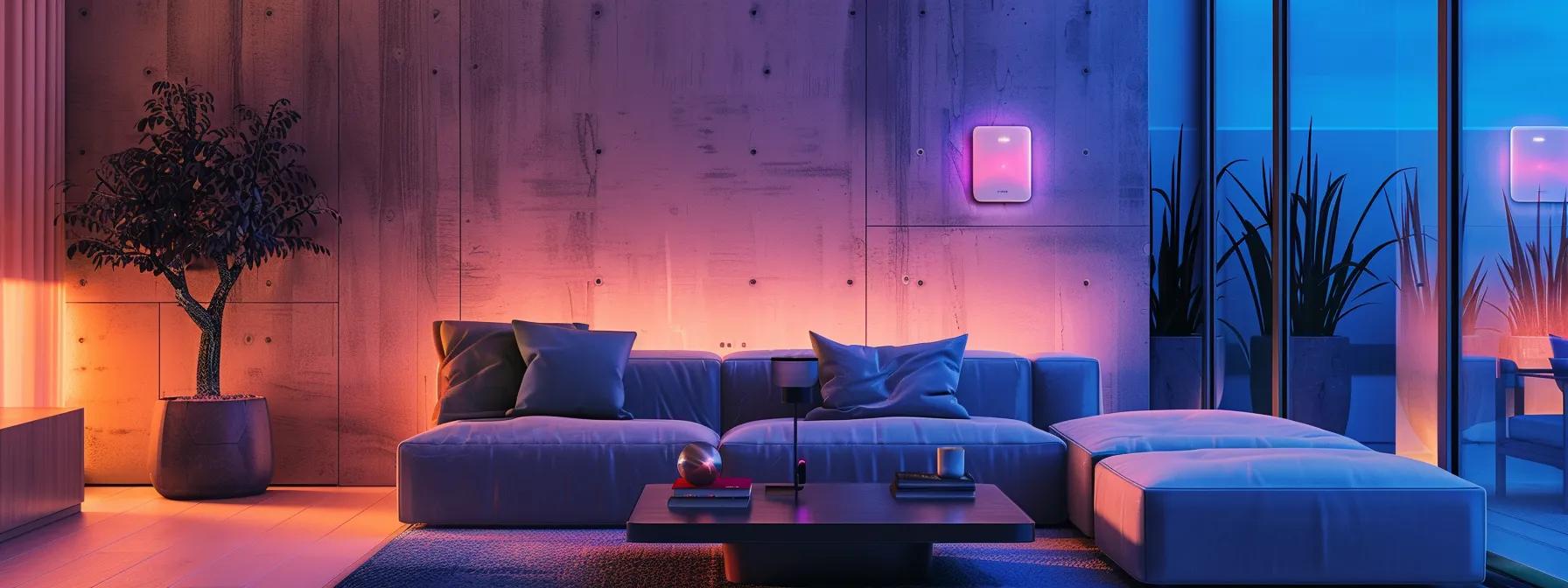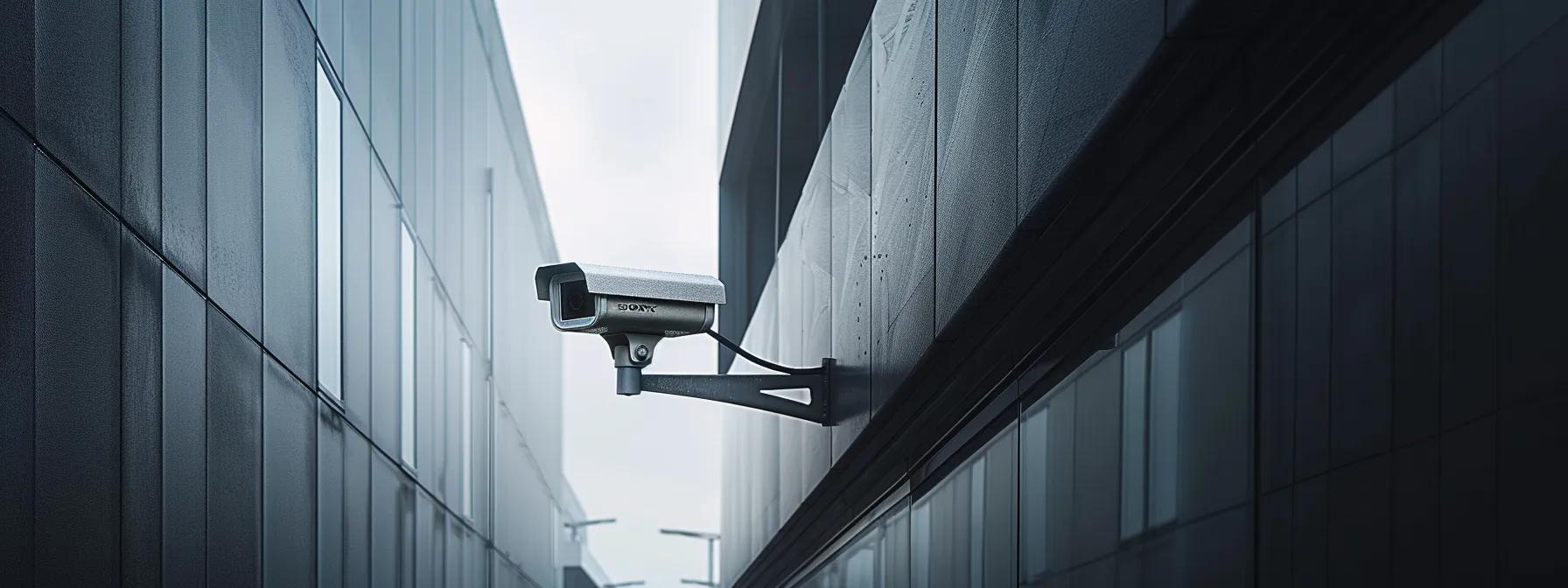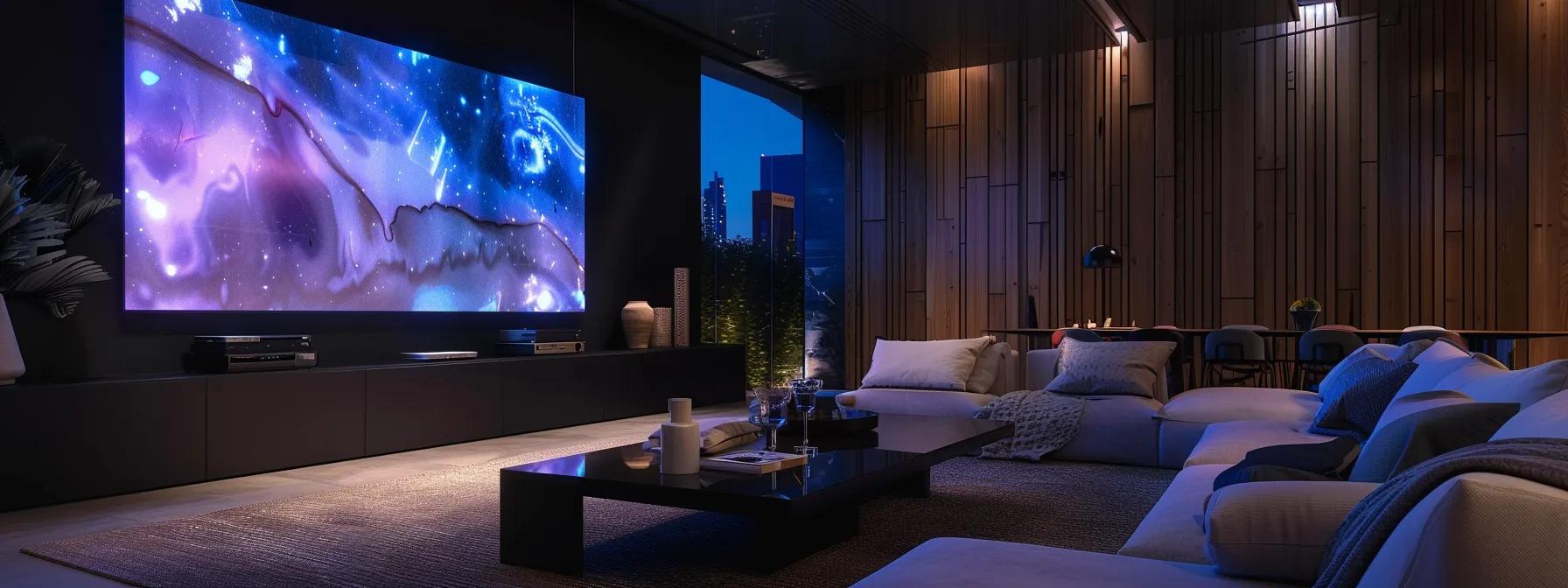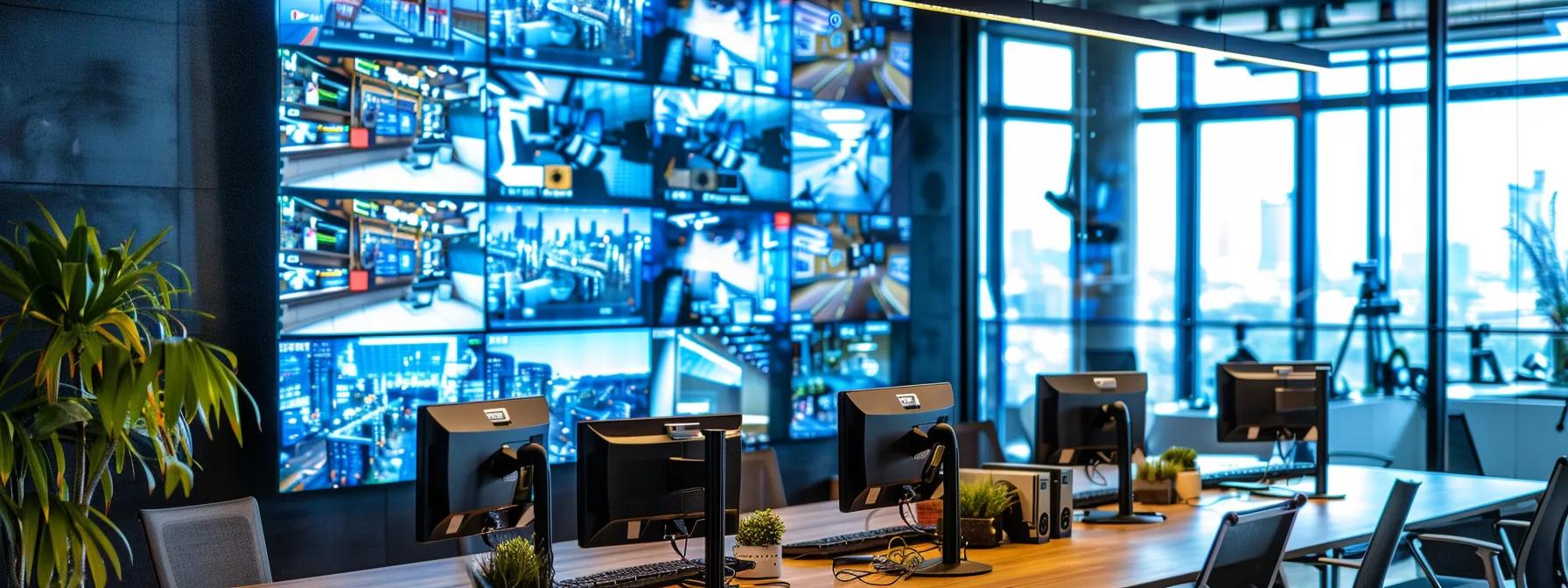
Enhancing Your Smart Home With Indoor Cameras Integration
Indoor cameras are revolutionizing home security and smart home integration by providing real-time monitoring, remote control, and video security solutions that enhance interconnectivity between your devices. As a crucial element of modern smart home systems, these cameras streamline security, convenience, and connectivity throughout your home. This article outlines key functionalities, integration techniques, and best practices for installing indoor cameras while addressing essential features and privacy concerns.
What Are Indoor Cameras and How Do They Enhance Smart Home Integration?
Indoor cameras are specialized security devices that monitor interior spaces and send live video feeds to smartphones or smart home hubs. They connect seamlessly with other devices—such as smart locks, thermostats, and voice assistants—via Wi-Fi or Ethernet, forming a cohesive security network. Their real-time streaming, motion detection, and cloud storage options allow for immediate alerts, making them ideal for families, pet owners, and anyone needing constant home monitoring.
What Features Define Modern Indoor Cameras?
Modern indoor cameras offer high-definition video, wide-angle lenses, and robust night vision. They include built-in microphones and speakers for two-way audio, and many now employ AI analytics to distinguish between human movement and other motion. Integration with cloud storage and local SD card options, along with encrypted transmission protocols, enhances both security and ease of use.
How Do Indoor Cameras Improve Home Security and Convenience?
By providing continuous surveillance and immediate reporting, indoor cameras deter burglaries and allow remote monitoring. They reduce unnecessary recordings through motion-activated capture and enable homeowners to check on their property via mobile apps or smart speakers, ensuring enhanced safety and peace of mind.
What Types of Indoor Cameras Are Available for Smart Homes?
Indoor cameras are available in various designs, including dome, bullet, and hidden types. Dome cameras offer a wide field of view with discreet designs; bullet cameras focus on longer ranges; and hidden cameras provide covert monitoring. Some models also include pet monitoring features like automatic panning and zooming.
Which Key Features Should You Look for in Indoor Cameras?

Key features to consider include motion detection, two-way audio, night vision, and resolution options. These features ensure the camera meets security needs and integrates smoothly with your home automation system.
How Does Motion Detection Work and Why Is It Important?
Motion detection uses advanced sensors or AI algorithms to detect changes in the camera’s field of view. It sends alerts when abnormal movements are recorded and minimizes false alarms—such as differentiating between a pet and an intruder.
What Are the Benefits of Two-Way Audio in Indoor Cameras?
Two-way audio allows direct communication through the camera’s microphone and speaker system. This lets homeowners interact with visitors, deter intruders, or simply check in on family members or service providers remotely.
How Does Night Vision Enhance Indoor Camera Performance?
Night vision uses infrared LEDs to capture clear footage in low-light or dark conditions. This feature is crucial for 24/7 surveillance, ensuring clear images during nighttime and in poorly lit areas.
What Resolution Options Are Best for Indoor Cameras?
Indoor cameras typically offer HD (720p), Full HD (1080p), and higher resolutions like 2K or 4K. Higher resolutions allow for more detailed images, aiding in clear identification during critical security events.
How Do You Integrate Indoor Cameras With Your Smart Home System?
Indoor cameras connect to your smart home system via wireless protocols such as Wi-Fi, Zigbee, or Z-Wave. They integrate with hubs like SmartHome Solutions, Amazon Echo, or Google Assistant using the manufacturer’s mobile app, enabling seamless communication with other devices.
How to Connect Indoor Cameras to the SmartHome Solutions Hub?
Download the SmartHome Solutions app and follow the setup instructions, which usually involve scanning a QR code or entering a unique device ID. Once connected, the camera joins the central management system for remote viewing, configuration, and automation.
How Can Indoor Cameras Work With Alexa and Google Assistant?
Through compatible applications or native integrations, indoor cameras can work with Alexa and Google Assistant. Homeowners can use voice commands to view live feeds, adjust settings, and receive notifications on smart displays.
What Smart Home Automation Is Possible With Indoor Cameras?
Indoor cameras can trigger automated routines such as turning on lights, locking doors, or recording brief video clips upon detecting motion. They integrate with other smart devices to create responses like activating alarms or adjusting thermostats, thereby enhancing overall home automation.
What Are the Best Practices for Installing and Setting Up Indoor Cameras?

Proper installation ensures optimal performance. Key practices include strategic placement for full coverage, secure Wi-Fi connectivity, and reliable power supply methods.
Where Should You Place Indoor Cameras for Optimal Coverage?
Place cameras near main entry points, hallways, and key living areas. Avoid obstructions like furniture and carefully consider placement near windows to reduce glare, ensuring maximum coverage and minimal blind spots.
How Do You Connect Indoor Cameras to Wi-Fi Networks?
Follow the manufacturer’s guide to enter your Wi-Fi credentials via a mobile app. To maintain a strong connection, position your router centrally or use Wi-Fi extenders, and ensure your network uses WPA2 or WPA3 encryption.
What Power Options Are Available for Indoor Cameras?
Indoor cameras typically use either wired power from an outlet or battery power, with some offering rechargeable options. Choose the option that best fits your installation environment and consider backup solutions like UPS to prevent downtime.
How Can You Troubleshoot Common Indoor Camera Issues?
Common issues such as connectivity loss or blurry images can often be resolved by checking power and Wi-Fi connections, updating firmware, and adjusting camera placement. Regular maintenance and consulting the manufacturer’s troubleshooting guide are recommended.
How Can You Ensure Privacy and Security When Using Indoor Cameras?
Maintaining privacy and security involves using data encryption, managing cloud storage settings, and fine-tuning privacy controls on the camera and its app to prevent unauthorized access.
What Data Encryption Methods Protect Indoor Camera Footage?
Encryption protocols like AES-256 secure video feeds during transmission between the camera, cloud storage, and your mobile device, protecting data from interception.
How Does Cloud Storage Work and What Are Your Options?
Cloud storage securely saves recorded footage offsite, with options ranging from subscription models to local SD card storage. Features typically include motion-triggered recording and timeline browsing.
How Can You Manage Privacy Settings on Indoor Cameras?
Adjust privacy settings by configuring user access controls, setting strong passwords, and scheduling recording times to avoid sensitive moments. Many apps also offer options to disable audio recording for added privacy.
What Are the Most Common Use Cases for Indoor Cameras in Smart Homes?

Indoor cameras serve various functions including enhanced security, pet and child monitoring, and elder care. They can record incidents and interact with other smart devices to provide a complete home monitoring solution.
How Do Indoor Cameras Enhance Home Security Monitoring?
They offer live streaming, quick alerts, and high-definition video to facilitate detailed reviews of incidents. With motion detection and AI analytics, cameras differentiate between everyday activity and genuine security threats.
How Can Indoor Cameras Help With Pet Monitoring?
Indoor cameras allow pet owners to monitor behavior, communicate through two-way audio, and track pets remotely, ensuring their well-being even when the owner is away.
What Are the Benefits of Using Indoor Cameras for Baby Monitoring?
For baby monitoring, cameras offer continuous surveillance, sensitive audio detection, and specialized night modes. Real-time access via mobile apps helps parents quickly respond to any concerning activity.
How Are Indoor Cameras Used for Elder Care and Safety?
Indoor cameras support elder care by detecting falls or unusual behavior and enabling remote monitoring by caregivers or family members. Integrated touch-free communication systems further help elders request assistance when needed.
Why Choose SmartHome Solutions Indoor Camera Integration Package?
The SmartHome Solutions package is designed for easy installation, seamless integration, and comprehensive support. It minimizes setup complexities while maximizing the benefits offered by a connected home security ecosystem.
What Makes SmartHome Solutions Cameras Stand Out?
These cameras feature crystal-clear 1080p (or higher) resolution, advanced motion detection, and robust night vision. They offer extensive cloud storage options and strong data encryption, balancing aesthetics with functionality.
How Does Seamless Integration With the SmartHome Solutions Hub Work?
Once connected via the SmartHome Solutions app, cameras automatically sync with other smart devices like lights and locks. This integration allows for personalized automation routines and provides centralized control through a single hub.
What Support and Installation Services Are Available?
SmartHome Solutions provides 24/7 technical support, troubleshooting, and professional installation assistance. Regular software updates and maintenance services ensure continuous, secure operation of the camera system.
List and Table: Key Comparison of Indoor Camera Features
Before the conclusion, here is a comparative table summarizing key indoor camera features:
Table: Indoor Camera Feature Comparison
| Feature | Attribute | Benefit | Example Use Case |
|---|---|---|---|
| Motion Detection | Advanced sensors & AI | Accurate alerts and fewer false alarms | Monitoring entry points during off hours |
| Two-Way Audio | Built-in mic/speaker | Real-time communication and verification | Responding to visitors remotely |
| Night Vision | Infrared LEDs | Clear imaging in low-light conditions | Surveillance in dark rooms |
| Resolution Options | 1080p, 2K, 4K | Detailed capture and clearer images | Identifying faces during investigations |
Frequently Asked Questions
Q: How do indoor cameras integrate with existing smart home systems? A: They connect via Wi-Fi or Ethernet and work with hubs like SmartHome Solutions, Alexa, and Google Assistant.
Q: Can indoor cameras work effectively in low-light conditions? A: Yes, infrared night vision ensures clear footage even in complete darkness.
Q: Why is two-way audio important for indoor cameras? A: It allows real-time communication with visitors or intruders and helps verify identities.
Q: What are the security benefits of data encryption in indoor cameras? A: Encryption (such as AES-256) protects video feeds during transmission, keeping your data secure.
Q: How can indoor cameras improve overall smart home automation? A: They can trigger automated routines like turning on lights, locking doors, and sending alerts via centralized smart hubs.
Final Thoughts
Indoor cameras are a cornerstone of modern smart home security. Their robust motion detection, two-way audio, and night vision capabilities create a reliable monitoring ecosystem. By following best practices for installation and privacy management, homeowners can enjoy enhanced security and peace of mind. Investing in a comprehensive solution like SmartHome Solutions ensures an integrated, future-proof smart security system.




